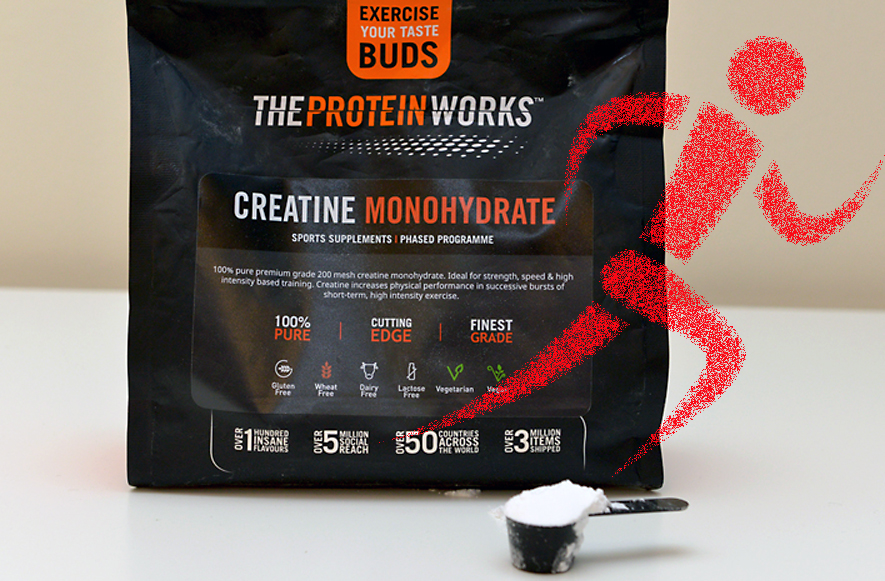Athletes: magnesium (still) matters!

Optimum magnesium intake is vital for sport performance, yet many athletes still fail to fully appreciate its importance. In an update article, Sports Performance Bulletin revisits this topic to see what the recent research says about magnesium for performance
With so much emphasis on sport-specific supplements such as carbohydrate and protein-recovery drinks, creatine, HMB etc, it’s all too easy to overlook the day-to-day dietary basics. Yet without the fundamental building blocks that a nutritious diet provides, it’s much more difficult for an active body to reap the benefits of training. Worse still, a sub-optimally nourished body is less able to withstand the stresses of training, increasing the likelihood of illness, injury and even long-term health problems.Although every single nutrient (vitamin, mineral) is important in its own way, some are particularly important to the sporting body. This is because a) they play a key role in biochemical reactions directly related to energy production and/or muscle function, and b) they are (for various reasons) more likely to be poorly supplied in the diet. The mineral magnesium most definitely falls into both of these categories, which explains why it’s worth discussing in more detail.
Magnesium basics
It was a few years years ago that we last discussed magnesium nutrition. In that article, we learned that as well as being critical for energy production, it was also becoming apparent that magnesium might play other vital roles in the body (box 1 below summarizes the key findings from our previous discussion). So what else have we learned in the meantime? We’ll go onto look at this shortly, but before we do, let’s just refresh ourselves with some basic facts about magnesium.In its pure elemental form, magnesium is a brilliant silvery-white metal (see figure 1), which burns with a dazzling white flame – something you might remember from your chemistry lessons! In the body, magnesium is the second most abundant mineral in cells after potassium – the typical human body contains around 60 grams or so in total. Roughly 25% of this magnesium is found in muscle tissue and 60% in bone tissue, but less than 1% of it is found in blood – even though blood magnesium is used as the commonest indicator of magnesium status. This blood serum magnesium can further be subdivided into ‘free ionic’, ‘complex-bound’ and ‘protein-bound’ portions, but it’s the free ionic portion that’s considered most important in measuring magnesium status, because it is physiologically active.
Magnesium is essential for more than 300 biological reactions, including those involved in carbohydrate, fat and protein metabolism, nerve function, muscular contraction and relaxation, heart function and bone formation. Even more important for athletes is magnesium’s pivotal role in both anaerobic and aerobic energy production. In particular, magnesium is needed for the synthesis of a very special molecule called adenosine triphosphate (ATP), which can be thought of as the ‘energy currency’ of the body.
Figure 1: Pure magnesium – a very beautiful metal!

The synthesis of ATP requires magnesium-dependent enzymes called ‘ATPases’. These enzymes have to work extremely hard; the average human can store no more than about 3oz of ATP, yet during strenuous exercise the rate of turnover of ATP is phenomenal, with as much as 15kgs of ATP per hour being continually broken down and reformed!
The problem with magnesium is...
The best sources of magnesium include unrefined whole grain cereals, such as wholemeal bread and pasta, and also in green leafy vegetables, nuts and seeds, peas, beans and lentils (see table 1). Fruit, meat and fish supply poor levels, as do refined foods. Contrary to common belief, milk and dairy products are NOT particularly rich sources of magnesium.Table 1: Magnesium content of some common foods (source USDA Nutrient Database)
| Food | Magnesium content (milligrams per 100g) |
| Pumpkin seeds (roasted) | 532 |
| Almonds | 300 |
| Brazil nuts | 225 |
| Sesame seeds | 200 |
| Peanuts (roasted, salted) | 183 |
| Walnuts | 158 |
| Rice (whole grain brown) | 110 |
| Wholemeal bread | 85 |
| Spinach | 80 |
| Cooked beans | 40 |
| Broccoli | 30 |
| Banana | 29 |
| Potato (baked) | 25 |
| White bread | 20 |
| Yoghurt (plain, low fat) | 17 |
| Milk | 10 |
| Rice (white) | 6 |
| Cornflakes (‘Frosties’ or ‘Honeynut’) | 6 |
| Apple | 4 |
Taking into account all of the above and the increasing consumption of fast, convenience and processed foods in Western societies, it’s perhaps easy to understand how dietary magnesium intakes can easily fall below the levels recommended (for health and performance). This is backed up by evidence indicating that dietary intakes of magnesium in the West have declined to less than a half of those recorded at the end of the 19th century and are still falling(3). Moreover, many nutritionists believe that the amount of magnesium required for optimum health has been underestimated in the past, and research has suggested that even small shortfalls in magnesium intake can seriously impair athletic performance. This evidence includes the following:
- A study on women put on a magnesium restricted diet, which showed for a given cycling workload, peak oxygen uptake, total and cumulative net oxygen utilization and heart rate all increased significantly during the period of magnesium restriction, with the amount of the increase directly correlated with the extent of magnesium depletion (ie the magnesium deficiency reduced metabolic efficiency, increasing the oxygen consumption and heart rate required to perform a given workload)(4);
- A study of male athletes supplemented with 390mgs of magnesium per day for 25 days, which resulted in an increased peak oxygen uptake and total work output during work capacity tests(5);
- A sub-maximal exercise study, which showed that magnesium supplementation reduced heart rate, ventilation rate, oxygen uptake and carbon dioxide production for a given workload – ie increased the efficiency of exercise(6);
- A study on physically active students, which showed that supplementing with 8mgs of magnesium per kilo of body weight per day produced significant increases in endurance performance and decreased oxygen consumption during sub-maximal exercise(7).
Box 1: What we reported about magnesium nutrition last time around
We last looked at magnesium nutrition in sportsmen and women some three years ago. At that time, the new findings we reported on included the following:- Athletes still at risk from magnesium shortfall – despite the overwhelming body of evidence that has accumulated in recent years on the critical importance of magnesium for sport performance, we highlighted that many athletes were seemingly still unaware of the risk of sub-optimum magnesium intakes. For example, a Portuguese study on basketball, handball and volleyball players found that a significant number weren’t consuming enough magnesium(8), while a 2010 Australian study on 72 elite female athletes from a variety sports found that a fifth of them were failing to meet even the minimum magnesium requirement(9). Meanwhile, a 2011 Canadian study on 32 elite athletes found that over 25% of both male and female athletes had inadequate magnesium intake(10), a Polish study on 74 elite runners also found intakes were significantly below the minimum recommended intake for magnesium(11) while a Japanese study on collegiate football players found that their average magnesium intakes were significantly below the Japanese recommended daily allowance (RDA)(12).
- Magnesium could function as an antioxidant – we also reported that magnesium may play a vital role as an antioxidant, helping to protect the body from the cellular damage that occurs when energy is generated in cells using oxygen – more commonly known as oxidative stress. Some oxidative stress is normal because it helps muscles to adapt to a training stimulus. Excessive oxidative stress however is undesirable, as it can result in inflammation resulting in muscle soreness and joint stiffness. According to some animal and human studies, it seems that low magnesium intakes are associated with increased levels of oxidative stress and also inflammation(13-21).
- Magnesium and strength – another area of research we reported on was the effect of magnesium supplementation on the hormone testosterone, which plays a vital role in muscle repair and growth – critical for strength athletes. A 2010 study, found that tae kwon do athletes practicing 90-120 minutes per day and supplemented with 10mgs of magnesium per kilogram body weight each day for four weeks had boosted levels of free (thought to be the most biologically active form) testosterone compared to their non-supplemented counterparts(22).
Box 2: How much magnesium do you need?
The UK recommended daily intake for magnesium is set at 300mgs for men and 270mgs for women. A few years ago, the US revised its figures upwards and now recommends an intake of 400mgs per day for men aged 19-30 and 420mgs per day for those over 30; the figures for women under and over 30 are 300mgs and 310mgs per day respectively. In Australia, recommended daily intake for magnesium has also been revised upwards in recent years and now stands broadly in line with those of the US. In New Zealand, the government’s recommended intake of magnesium is 420mg per day for men and 320mg for women. However, official guidelines point out that some groups of people may need more – for example those who regularly consume alcohol, sugary or caffeine-containing drinks like tea, coffee, cola or other soft drinks, those who are experiencing a large amount of ongoing stress in their lives and those taking certain medications such as corticosteroids, diuretics, antibiotics or the oral contraceptive pill. More generally, some researchers have suggested that even the higher recommended levels are too conservative, and that they should be set at around 450-500mg per day for all adults.Magnesium and lactate
Okay, let’s now look at some of the updated magnesium research to emerge. A fascinating study has looked at the effect of supplemental magnesium on muscle lactate clearance(23). Lactate is produced in the muscles whenever energy demand outstrips oxygen supply – eg during a flat out effort. Because it leads to extreme fatigue, forcing you to slow down or even stop, the faster you can clear lactate from your muscles after a hard effort, the better because you will be ready to go again sooner.In the study, one group of rats were given 90mgs per kilo of magnesium 30 minutes before an hour’s treadmill exercise while another was given saline solution (control group). The researchers then measured levels of blood lactate during and after the rats’ treadmill run. The key finding was that when supplemental magnesium was given, the rats’ lactate levels rose more slowly during exercise and they cleared lactate from their blood far more rapidly than when it wasn’t (see figure 2). One explanation (for which there’s supporting evidence) is that the extra magnesium increases the ability of cells in the nervous system (that control muscle firing) to convert accumulated lactate into energy, which helps to reduce fatigue and lactate levels. Of course, there are caveats here; firstly results from an animal study don’t carry the same weight as from a human study. Also, this is only one study, but the results are still extremely interesting nevertheless.
Figure 2: Lactate levels during and after exercise in rats running on treadmill(23)

Open circles = controls; closed circles = magnesium supplemented. Notice that magnesium-supplemented rats showed a slower build up of lactate, lower peak levels and faster lactate clearance.
Blood pressure
The post-exercise theme continues with another more recent study, which looked at the effects of habitual dietary magnesium intake and supplementation on blood pressure after exercise(24). Sixteen male volunteers were divided in two groups: one took a magnesium supplement of 300mgs per day for 14 days while the control group who took no magnesium. All the subjects also kept a 3-day food diary so average dietary magnesium intakes could be recorded.Before and after the 14-day period, all the subjects performed a test in which they cycled as hard as they could for 30 minutes, immediately followed by three reps of a 5-second isometric bench press (where the weight is held above the chest in a static position – a movement known to elevate blood pressure). Resting blood pressure and heart rates were measured before and after the intervention.
At the end of the 14-day intervention, there were no changes in performance. However, the magnesium-supplemented group had an average reduction in their resting systolic blood pressure (the pressure in the arteries created by the heart beat) of 8.9 mmHg. Post-exercise blood pressure was 13.0mmHg lower in the magnesium group. Another finding was that average heart rate fell by around 7 beats per minute in the magnesium group - there was also an inverse correlation between dietary magnesium intake and blood pressure (higher dietary magnesium intake led to lower blood pressure). The researchers concluded that higher intakes of magnesium in those who exercise have positive heart health implications.
Heart health
The notion that magnesium is good for heart health has good scientific support from elsewhere. A 2012 meta-study (a study that pools all the evidence from previous studies) looked at magnesium intake and stroke risk (stroke risk is known to greatly increased by high blood pressure)(25). When data from 6477 cases of stroke and nearly a quarter of a million participants were analysed, there was a significant inverse association between magnesium intake and risk of stroke – for every extra 100mgs of magnesium consumed per day, there was an 8% reduction in stroke risk.Interestingly, these health benefit findings have been replicated in a meta-study on ‘metabolic syndrome’(26). Metabolic syndrome increases the risk of developing cardiovascular disease (particularly heart failure) and diabetes, and is defined as a co-occurrence of three out of five of the following medical conditions: abdominal obesity, elevated blood pressure, elevated blood sugar, high blood triglycerides, and low high-density cholesterol (HDL) levels. For every 100mgs per day increase in magnesium intake, the overall risk of having metabolic syndrome was reduced by a very significant 17%.
Another study on over 7,000 older adults found that higher magnesium intakes are associated with a lower risk of dying from cardiovascular disease and cancer(27). Those who were in the top third bracket for dietary magnesium intake had a 34% reduction in mortality risk. While active sportsmen and women are unlikely to be concerned about these conditions, it’s nevertheless reassuring that optimum intakes of magnesium offer a protective effect for health.
Another more recently discovered health benefit of magnesium for athletes concerns bone health. Exercise is known to be very important for building bone density, creating stronger bone tissue, which in turn reduces the risk of osteoporosis in later life. However, low-impact forms of exercise such as swimming and cycling are much less efficient at building bone density – indeed some research on road cyclists suggests they may have lower bone density in the hip and spine than their sedentary counterparts(28).
A study on 17 elite swimmers looked at magnesium intake and bone density(29). It found that among the group as a whole, magnesium intakes were significantly below recommended levels – just another example that many athletes still fail to appreciate the importance of magnesium! Interestingly, there was also a direct link between magnesium intake and bone density; higher intakes of magnesium were associated with increased levels of bone mineral density. The authors were keen to stress that ‘given its potential beneficial role in bone mineral mass acquisition during growth, young athletes engaged in low impact sports, should pay special attention to their magnesium intake’.
Past and present
Let’s conclude by looking at how the more recent evidence on magnesium fits with that we reported on previously. As we’ve just mentioned in the swimming study(29), evidence continues to roll in that sub-optimum magnesium intakes are all too common, even among elite athletes. Other studies that reinforce previous findings include a study on 23 professional football referees where 26% of the study group were short on magnesium intake(30) and a Polish study on 25 athletes, which found a magnesium shortfall in no less than 60% of the subjects(31)!Recent evidence also supports the notion that optimum magnesium intakes can help reduce inflammation. A meta-study looked at seven previous studies on a total of 32,918 participants(32). It found that higher levels of magnesium were associated with lower levels of an inflammatory protein called C-reactive protein (CRP). Moreover, five on these studies demonstrated that increasing magnesium intake reduced levels of CRP.
Summary
Over the past decade, evidence has continued to accumulate that magnesium is critical for sport performance; improved endurance, strength and antioxidant protection are just three of the ways that a magnesium-rich diet can benefit sportsmen and women. To that list it appears we can now add improved and bone and cardiovascular health. And although more research is needed, there’s also a suggestion that higher magnesium intake could help lactate metabolism. Given its importance and that many athletes are still not consuming adequate intakes of magnesium in their diets, optimizing your magnesium status should be a key part of any dietary strategy to enhance performance, and not just an afterthought!Practical recommendations
Use the information in box 3 to see assess your risk of low magnesium intake. If so, improving your magnesium status using the suggestions below is recommended:- *Make a conscious effort to increase magnesium-rich foods by switching to and eating more whole grain breads, cereals and rice, and boosting your intake of green, leafy vegetables as well as beans and peas, and all nuts and seeds;
- *Magnesium intakes above 400-500mgs per day are unlikely to further boost performance, but magnesium supplements are cheap and non-toxic, so can safely be used as an insurance policy;
- *If you do supplement, it is inadvisable to supplement more than 400mgs per day;
- *Some magnesium supplements such as magnesium oxide are quite alkaline and can have the side effect of neutralizing stomach acid and interfering with digestion - these forms should be taken away from meals;
- *Magnesium is also best absorbed in small, but frequent doses, so for example, it’s more advisable to take 100mgs with meals 3 times a day rather than to take 300mgs in one go!
Box 3: Risks and possible symptoms of low magnesium intake
*Eating habits associated with low magnesium intake
- You tend to eat white flour products instead of wholemeal products
- You have a low intake of green leafy vegetables
- You don’t eat much in the way of nuts and seeds or beans and lentils
- You consume fast/processed foods on a regular basis
- You frequently consume sugar, or sugary products
- You drink alcohol regularly
- You follow a calorie restricted or high-protein, low carbohydrate diet
*Possible symptoms of sub-optimum magnesium intake
- Muscle cramps, twitches or tremors
- Regular or excessive fatigue
- Feelings of irritability and/or lethargy
- Frequent mood swings including depression
- Restless legs at night
- Women – pre-menstrual bloating
References
- National Research Council of Canada: Ottawa, ON: NRCC Publications (1979)
- Med Hypotheses. 2001 Feb;56(2):163-70
- Med Sci Sports Exerc 1986; 18(suppl):S55–6
- Am J Cardiol 2003, 91(5): 517-21
- Med Sci Sports Exerc 1986; 18(suppl):S55–6
- Am J Cardiol 2003, 91(5): 517-21
- Cardiovasc Drugs Ther 1999, 12 Suppl 2: 153-6
- Magnes Res. 2011 Dec;24(4):215-9
- Int J Sport Nutr Exerc Metab. 2010 Jun;20(3):245-56
- Int J Sport Nutr Exerc Metab. 2011 Oct;21(5):417-25
- Rocz Panstw Zakl Hig. 2011;62(4):413-8
- Asia Pac J Clin Nutr. 2009;18(3):344-50
- Magnes Res. 2000 Mar;13(1):29-36
- Magnes Res. 2003 Mar;16(1):13-9
- BioMetals 2006, Volume 19, Number 1, Feb 2006
- Can J Physiol Pharmacol. 2006 Jun;84(6):617-24
- Free Radic Biol Med. 2006 Jul 15;41(2):277-84
- Pathophysiology. 2007 May;14(1):11-5
- Arch Biochem Biophys. 2007 Feb 1;458(1):48-56
- Am J Clin Nutr. 2006 Nov;84(5):1062-9
- Eur J Nutr. 2007, 46:4 230-237
- Int J Sport Nutr Exerc Metab. 2011 Oct;21(5):417-25
- PLOS One January 2014; Vol 9 (1)e85486
- J Sports Sci Med (2013) 12, 144-150
- Am J Clin Nutr. 2012 Feb;95(2):362-6
- Diabet Med. 2014 Jun 26. doi: 10.1111/dme.12537. [Epub ahead of print]
- J Nutr. 2014 Jan;144(1):55-60
- J Sports Med Phys Fitness 2009; 49 : 44 – 53
- Magnes Res. 2012 Jul-Sep;25(3):120-5
- J Sports Sci. 2014;32(13):1279-85
- Rocz Panstw Zakl Hig. 2013;64(2):143-8
- Eur J Clin Nutr. 2014 Apr;68(4):510-516
You need to be logged in to continue reading.
Please register for limited access or take a 30-day risk-free trial of Sports Performance Bulletin to experience the full benefits of a subscription. TAKE A RISK-FREE TRIAL
TAKE A RISK-FREE TRIAL
Newsletter Sign Up
Testimonials
Dr. Alexandra Fandetti-Robin, Back & Body Chiropractic
Elspeth Cowell MSCh DpodM SRCh HCPC reg
William Hunter, Nuffield Health
Newsletter Sign Up
Coaches Testimonials
Dr. Alexandra Fandetti-Robin, Back & Body Chiropractic
Elspeth Cowell MSCh DpodM SRCh HCPC reg
William Hunter, Nuffield Health
Keep up with latest sports science research and apply it to maximize performance
Today you have the chance to join a group of athletes, and sports coaches/trainers who all have something special in common...
They use the latest research to improve performance for themselves and their clients - both athletes and sports teams - with help from global specialists in the fields of sports science, sports medicine and sports psychology.
They do this by reading Sports Performance Bulletin, an easy-to-digest but serious-minded journal dedicated to high performance sports. SPB offers a wealth of information and insight into the latest research, in an easily-accessible and understood format, along with a wealth of practical recommendations.
*includes 3 coaching manuals
Get Inspired
All the latest techniques and approaches
Sports Performance Bulletin helps dedicated endurance athletes improve their performance. Sense-checking the latest sports science research, and sourcing evidence and case studies to support findings, Sports Performance Bulletin turns proven insights into easily digestible practical advice. Supporting athletes, coaches and professionals who wish to ensure their guidance and programmes are kept right up to date and based on credible science.









